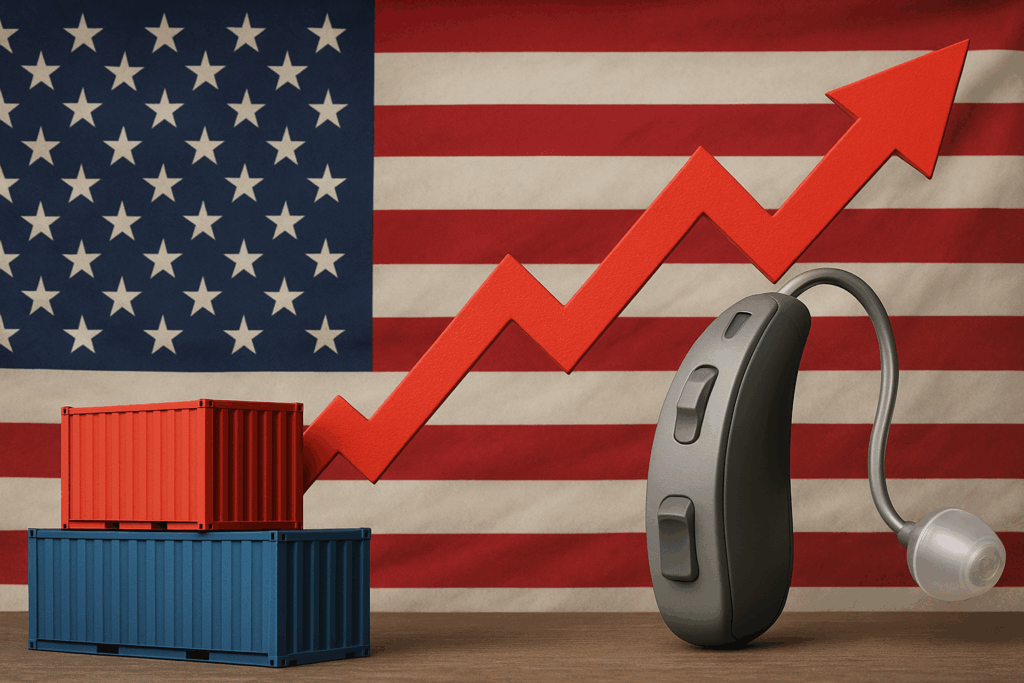Hearing Health News — May ’25
In this recurring blog series, we take a look at a few of the past month’s stories in the world of hearing health care.
Petition calls for changes to hearing aid battery packaging
In a well-meaning move to protect children, Reese’s Law was passed after the tragic death of 18-month-old Reese Hamsmith, requiring child-resistant packaging for button batteries. Unfortunately, the law has made life harder for another vulnerable group: seniors and disabled individuals who rely on these same batteries to power their hearing aids.
Now, a petition led by Abram Bailey (founder of HearingTracker.com) is calling on lawmakers to revisit the law and find a middle ground—one that maintains child safety while also making battery packaging more accessible for elderly users with vision, dexterity, or cognitive challenges.
It’s a smart, pragmatic ask. While many hearing aids are now rechargeable, millions of users still depend on traditional zinc-air batteries—and for them, the new packaging can be an everyday obstacle. The petition isn’t asking for the law to be rolled back—just adapted to better serve all users.
Sign the petition here if you'd like to add your voice.
Will tariffs raise hearing aid prices? Still unclear—but unlikely (for now)
The hearing industry has been buzzing over possible fallout from President Trump’s sweeping new tariffs. With medical devices named in the tariff language, the big question on everyone’s mind has been: Will this affect hearing aid prices in the U.S.?
As of now, we’re still in wait-and-see mode. The administration has announced a 90-day pause on retaliatory tariffs, and while some categories of medical devices appear to be in the crosshairs, hearing aids may be spared. In fact, under Chapter 98 of the Harmonized Tariff Schedule (HTSUS), most hearing aids—when imported as complete, ready-to-use devices—are currently duty-free.

At ZipHearing, we haven’t seen any price changes from the manufacturers we work with. And more telling—none of them have even hinted that price increases might be coming. If there were concerns about rising costs, we’d normally receive some sort of heads-up. So far? Radio silence.
And even if tariffs do eventually apply, we suspect any increase would be absorbed across the supply chain—split between manufacturers, providers like us, and end users. Because the tariffs are calculated on the landed cost (i.e., the wholesale price manufacturers pay to bring hearing aids into the U.S.), the overall impact on retail prices would likely be minimal. A worst-case scenario might mean a $100–$200 bump in price—but only if the tariffs are fully passed along to the consumer, which seems unlikely.
Bottom line? If you were already planning to buy hearing aids in the next few months, go ahead. But don’t feel like you need to rush. We’re monitoring things closely, and for now, it’s business as usual.
New video compares Starkey, Phonak & Oticon hearing aids—Part 2 now live
Earlier this year, we released a video comparing three of the top-tier hearing aids on the market—Phonak Audéo Sphere Infinio 90, Oticon Intent 1, and Starkey Edge AI 24. That video turned out to be one of our most popular pieces of content this year, with over 25,000 views on YouTube. So, we decided to take it a step further.
In Part 2, we move beyond personal impressions and go deeper with real-world data. This new video looks at verified user reviews, return rates, and actual purchase behavior from our ZipHearing customers who tried multiple models side-by-side.
What makes this follow-up different is the objectivity—we're not just sharing what we thought about the hearing aids, we're showing how real users responded to them in practice. Which model did customers keep most often? What patterns are emerging in terms of satisfaction and performance?
Whether you’re considering one of these three models or just curious how they stack up against each other in the real world, this data-driven comparison might be worth a few minutes of your time.






